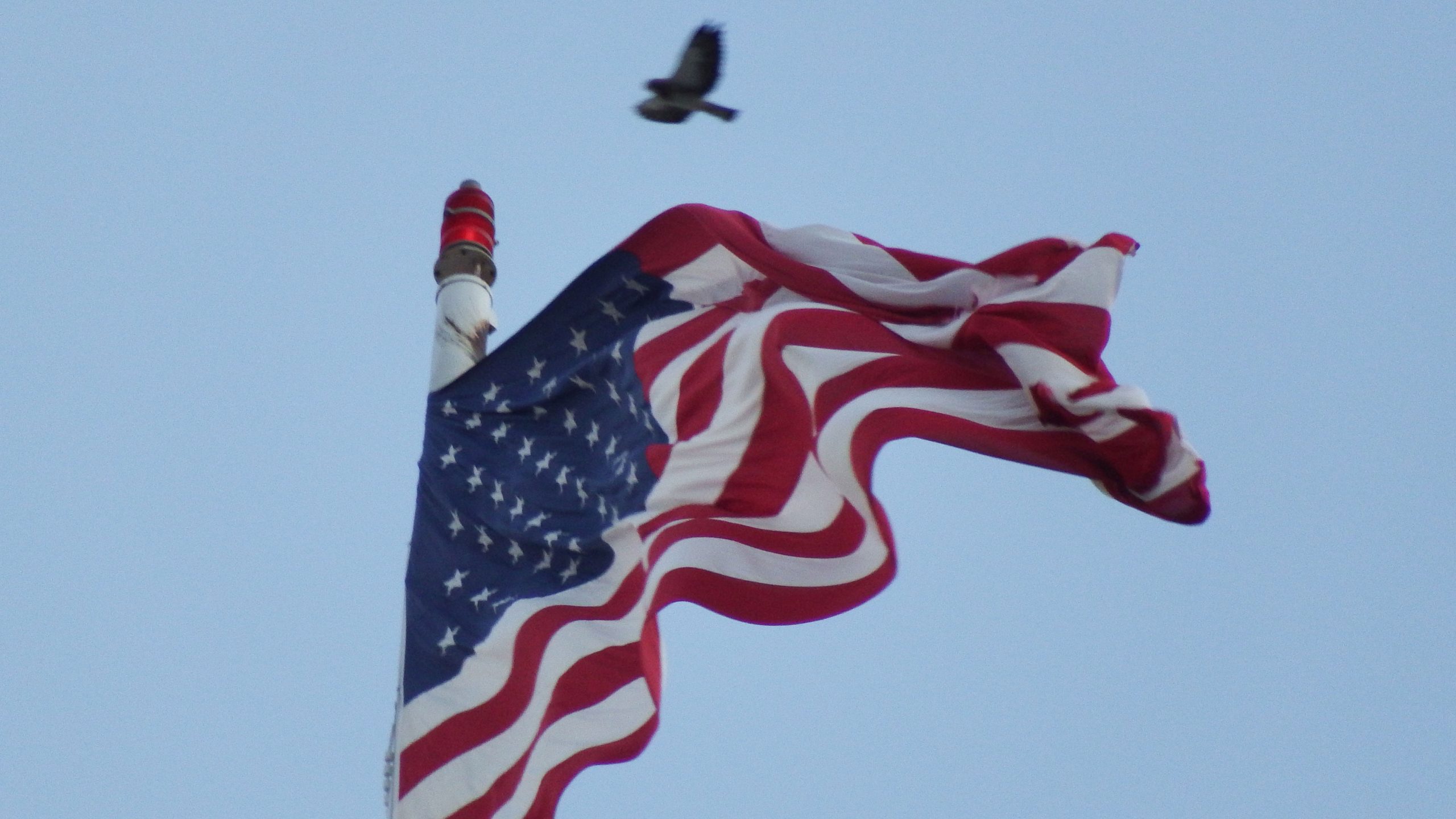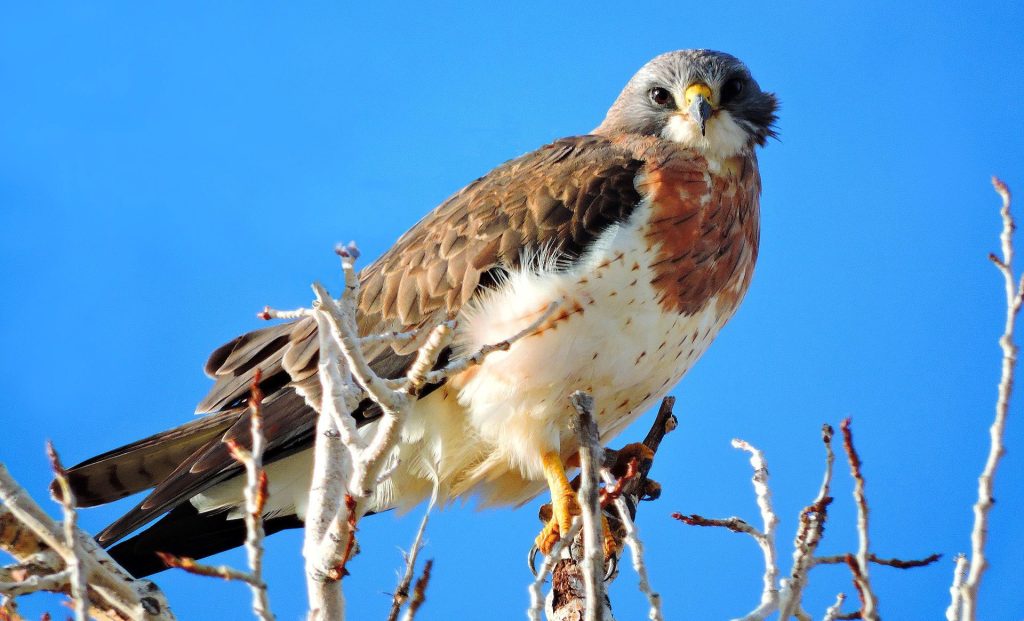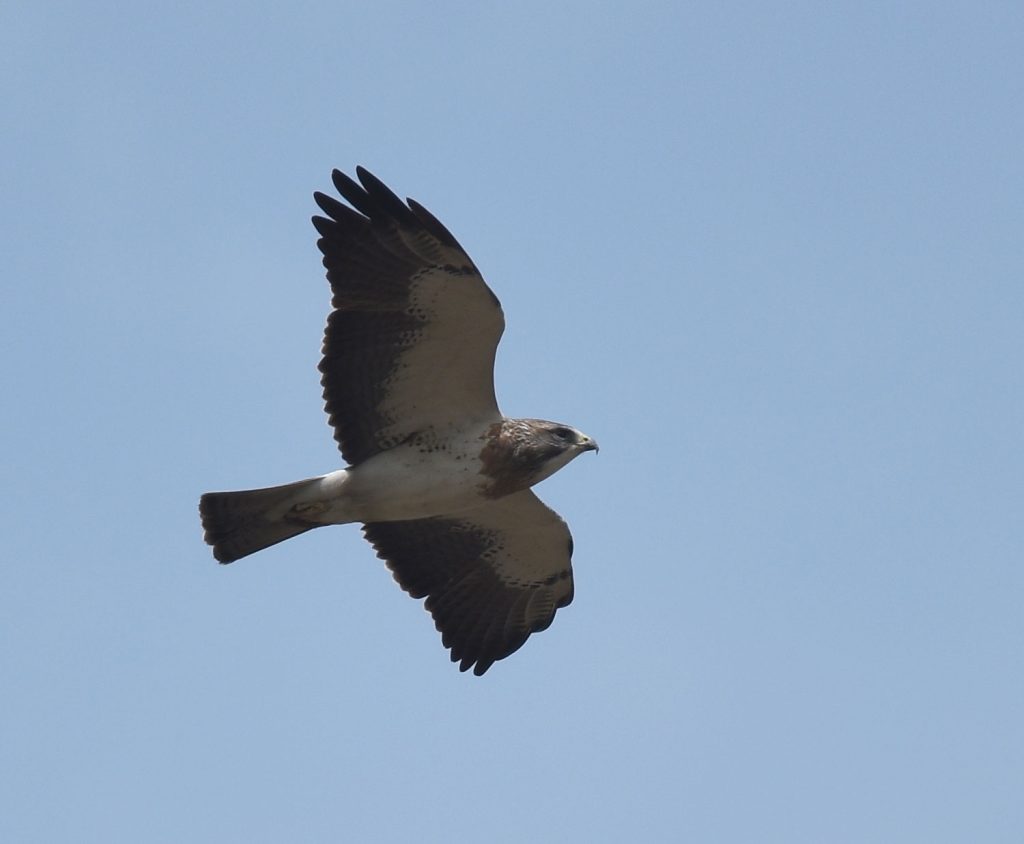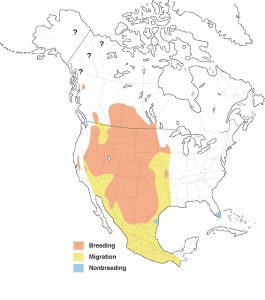Our oddball Swainson’s hawks

In the summer, almost every night, Swainson’s hawks fly through the stream of bats emerging from the Waugh Drive bridge and indulge in an orgy of bat consumption. They grab a bat in one claw and put it in their mouth, often while grabbing another.
I really should have written about this in the spring or summer when the hawks are reliably at the bat bridge each night, but this blog is so photo driven that I shied away from a post about which I could provide no photos. Everything takes place at night. I do have one blurry shot (nice flag, though) from September 15.
Last Friday, the Park had a bat and bird event (I was preparing for the event when I caught the photo on the 15th), but the hawks must have missed the memo and were a no-show. Perhaps they have already flown south, it’s time.
So, why I am writing about birds that may have migrated and of which I do not have good imagery? Because I just found out how amazing they are and I simply cannot wait until next year to write about it. I am the child that eats the marshmallow (Google it).
Our Swainson’s hawks are outliers, in a way. But we will get to that. Your everyday Swaison’s hawk lives two lives. In breeding season,they live in North American grasslands. They hunt small rodents, snakes, lizards. They hunt from low perches and patrol the grasslands in low flights. Their pair bonds last a long time and during breeding season, the Swainson’s live as a nuclear family, parents and that season’s offspring.
In the fall, they gather in enormous flocks and start their epic migration to their winter grounds in Argentina. During the non-breading season, Swainson’s go from being somewhat isolationist to being quite gregarious, migrating and hunting in large groups. In 1953, a flock of 25,000 Swainson’s were seen overhead in San Antonio.

By Great Sand Dunes National Park and Preserve – Swainson’s Hawk, CC BY 2.0, https://commons.wikimedia.org/w/index.php?curid=51330710
Swainson’s are big hawks; their wingspan is about four feet. Usually, bigger animals have bigger nutritional requirements, but Swainson’s hawks not in breeding season live mostly on insects which they catch both on the wing and by running on the ground. I would love to see this, but since they do it only during non-breeding season in Argentina, I imagine I will miss this natural wonder.
Swainson’s hawks are masters of the thermal. A thermal is a column of air that is hotter than the air around it. Think of a big parking lot with black pavement. That gets pretty hot. That extra heat will create a rising thermal current (heat rises). All kinds of birds use these thermal air currents to gain altitude almost without effort. They spread their wings and soar in lazy circles as the upward column of air lifts them.
Swainson’s use these thermals in their epic migration. Some fly all the way from Canada to Argentina. They do it (in flocks of thousands) by rising as high as a thermal will take them, and then gliding southward, losing altitude until they encounter another thermal. This type of flight requires very little effort.
They also navigate thermal streets in the air, flying at altitudes exceeding three miles. They can coast 60 miles in a straight line following these aerial thermal streets.

This image of a Swainson’s hawk in flight is from Wikipedia. If you see one overhead, you will notice the dark trailing wing edges and probably that brown bib.
When the sun sets, the thermals dissipate and the huge flocks roost in trees and wait for the heat of the next day. Some studies suggest that the Swainson’s don’t eat during most of their migration as evidenced by no poop under their collective evening roosts. But other literature note them stopping to eat caterpillars and crickets.
But once they arrive at their wintering grounds on the pampas of Argentina, their skill with thermals comes in handy. While they spend the early and later part of the day hunting insects on the ground, in the middle of the day, they take to the air to feed on grasshoppers and crickets which become caught in thermals and lofted skyward. Swainson’s hawks fly through the thermal column grabbing insects on the wing and eating as they go. Rather like they do with our bats.
They are estimated to eat six grasshoppers a minute thermal hunting in Argentina.
During the breeding season, Swainson’s hawks supplement their insect diet with small mammals and reptiles.

From Cornell Lab of Ornathology
Now about our own Swainson’s hawks. They are oddballs. First off, they shouldn’t be here. We are a couple of hundred miles east of their breeding range (the orange portion of the map above). It would be one thing if we had a pair one year or another, but we have had a pair in Houston for more years than I can count.
I think they are here because of the bats, but I really have no idea. I don’t even know if our Swainson’s migrate. I do know that I don’t see them at the bat bridge in the fall and winter. I have only seen two at a time. Their pair bonds last many years, so it would not be impossible that this is a breeding pair. On the other hand, I’ve never seen three together. Juvenile hawks usually spend some time hunting with their parents as they acquire skills of their own.
In the distribution map from Cornell, they show two small blue “non breeding” areas at the tip of Florida and the eastern coast of Mexico. Perhaps that is what we have here in Houston.
We are certainly on their migration route, so you might see some flying overhead on their way to Argentina.
I will take a look in the next week or so to see if they are still visiting the bats, but best bet is to wait for May/June. You can’t see the action without binoculars. Without them, you will see the hawks fly through the bats, but you will miss the catching and eating part. Best place to stand for this is on the north side of the bayou east of the bridge. That way, the AIG building can act as a background, making the whole show easier to see.

